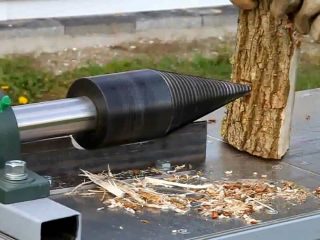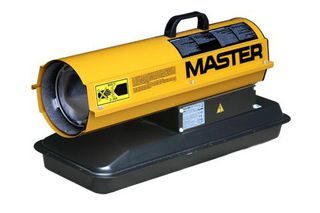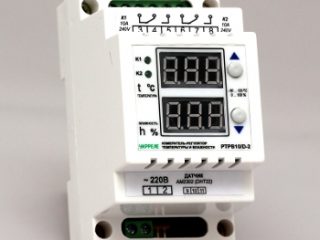Content
Gasoline generators are an important piece of equipment for both homes and businesses. They provide a reliable source of electricity when the main power supply is out, or in places where connection to the central network is not possible. This can be vital in many situations - from keeping vital equipment running to keeping your home comfortable during a power outage.
Gasoline generators operate on the basis of internal combustion. The gasoline engine drives a generator, which in turn creates electrical energy. This process, although simple in general understanding, involves many components and systems that can fail and cause problems.
One of the common problems that owners of gasoline generators may encounter is a situation where the generator does not start, but there is a spark. This can be confusing since a spark usually indicates that the ignition system is working correctly.However, despite this, the generator still does not start.
Understanding this problem and its possible solutions is key to ensuring the reliable operation of your gas generator and, ultimately, your ability to maintain power when it matters most. In this article we will look at this problem in detail and suggest possible ways to solve it.
Part 1: Understanding the Problem
Gasoline generators have a simple and at the same time complex operating process. On the one hand, the mechanics of its operation are quite straightforward: the engine burns gasoline, creating a force that in turn drives a generator to create an electric current. On the other hand, this process involves many different components and systems that all need to work together harmoniously.
If the generator does not start, but there is a spark, this indicates that the ignition system is working correctly. The ignition system is responsible for creating a spark that ignites the fuel and air mixture inside the engine, thereby initiating the combustion process. However, even if a spark is present, this does not necessarily mean that the rest of the generator systems are working properly.
The main reasons why a generator may not start include:
- Fuel supply problems: If there is a problem with the fuel delivery system, the engine may not receive the required amount of fuel for combustion. This may be due to contamination or clogging of the fuel system, poor quality or old fuel.
- Air filter problems: The air filter serves to clean the air entering the engine.If the filter is clogged or damaged, it may result in insufficient air supply to mix with the fuel and initiate the combustion process.
- Carburetor problems: The carburetor is responsible for properly mixing fuel and air before they enter the engine cylinders. If the carburetor is faulty or incorrectly adjusted, it can prevent fuel and air from mixing properly.
- Compression problems: For successful starting and operation, the engine must maintain a certain level of compression in the cylinders. If the compression level is too low, the engine may not start despite the presence of a spark.
Understanding these reasons is the first step to solving the problem. In the next part, we'll look at how to diagnose and correct each of these causes to get your generator working properly again.
Part 2: Diagnosing the problem
The next stage is diagnosing the problem. Using the information we just discussed, you can narrow down the potential problems that could be causing your generator to fail.
Step 1: Check the fuel system
- Make sure there is enough fuel in the tank. This may sound obvious, but it is one of the most common causes of generator failure.
- Check the fuel quality. Old or poor quality fuel can cause problems with the generator.
- Check the fuel filter for dirt or blockages.
- Check fuel lines for leaks or blockages.
Step 2: Checking the Air Filter
- Check the air filter for contamination. If the filter is clogged, clean it or replace it with a new one.
- Check if the air filter is damaged.If it is damaged, it should be replaced.
Step 3: Carburetor Check
- Make sure the carburetor is mixing air and fuel properly. If the mixture is too rich (too much fuel) or too lean (too much air), it may prevent the engine from starting.
- Check the carburetor for dirt or blockages. In some cases, the carburetor may require professional cleaning or replacement.
Step 4: Checking the Ignition System
- Check the spark plugs. If there is a spark, then the spark plugs are probably working properly. However, if the spark plugs are dirty or damaged, it may interfere with the ignition process.
- Check the spark plug cable. If it is damaged, it may spark in the wrong place.
Step 5: Compression Test
- Check the compression level in the engine cylinders. If the compression level is too low, the engine may not start. To do this, you may need a specialized tool called a compression gauge.
Remember that safety precautions should always be taken when working with a generator. If you are not confident in your abilities, contact a professional.
Part 3: Gasoline generator repair
The next step is to repair your gas generator. Depending on the problem diagnosed, the repair process may vary.
Tools and materials that may be required:
- Screwdriver Set
- Keys of various sizes
- Compression gauge (if a compression test is required)
- Spare air and fuel filters
- Spare fuel
- Spare spark plug
Repair process:
- Replacing filters: If you find that the air or fuel filters are clogged or damaged, replace them.This is a relatively simple process that usually requires just a screwdriver.
- Carburetor cleaning: If the carburetor is clogged, it must be cleaned. This can be quite a complicated process, requiring disassembly of the carburetor. If you are not confident in your skills, consult a professional.
- Replacing the spark plug: If the spark plug is dirty or damaged, replace it. Simply unscrew the old spark plug with a wrench and then screw in the new one.
- Checking the compression level: If the compression level is low, the problem may be more serious and require professional service. However, in some cases, the compression level can be increased by replacing the cylinder head or gaskets.
Additional tips and cautions:
- Always turn off the generator before starting any repairs. This will reduce the risk of injury from accidentally starting the generator.
- If you are not confident in your abilities, contact a professional. Improper repairs can lead to bigger problems in the future.
- Try to perform regular maintenance on your generator to prevent future problems. This includes checking and replacing filters, checking and replacing spark plugs, and regularly checking fuel levels.
By following these tips, you can eliminate many common problems with your gas generator and ensure long, reliable service.
Part 4: Preventing problems with a gasoline generator
One of the best ways to prevent problems with a gasoline generator is to maintain it regularly and pay careful attention to the condition of every part. By following these simple tips, you can avoid many problems and extend the life of your generator.
- Check and change fuel: Old or poor quality fuel can cause a variety of problems, including clogged carburetor and fuel system. Check the quality of the fuel regularly and change it if necessary.
- Clean and replace filters: Air and fuel filters play an important role in the functioning of the generator, protecting the engine from dust and impurities. They must be checked regularly and, if necessary, cleaned or replaced.
- Monitor the condition of the spark plugs: Spark plugs are important for initiating the combustion process. Over time, they can become dirty or worn out, causing them to become less efficient. Check their condition and replace if necessary.
- Check the oil level: Oil helps lubricate the engine and prevent overheating. Check the oil level regularly and top up if necessary.
- Check the ignition system regularly: Check the condition of the wires, ignition coil and distributor. These components should be replaced at the first sign of wear or damage.
- Store the generator in a dry and clean place: Dust, dirt and moisture can cause corrosion and other problems. It is best to store the generator in a dry, closed area.
- Do not overload the generator: Comply with the power specified in the technical specification of your generator.
Part 5: Summary and Conclusion
During this article, we discussed many aspects related to the difficulties that can arise when working with a gasoline generator, in particular when there is a spark, but it does not start.
We have looked at the main causes of this problem, including problems with the fuel supply system, air filter, carburetor and ignition system.Each of these problems requires its own approach to diagnosis and repair, but the key to a solution in any case is care and thoroughness.
The steps for diagnosing and repairing a gasoline generator were described in detail. It follows that even in the presence of a spark, problems may arise that interfere with the operation of the generator, but thanks to detailed diagnostics and proper repairs, they can be successfully eliminated.
In addition, the importance of regular generator maintenance was emphasized to prevent future problems. Proper and timely maintenance will not only help prevent many problems, but will also extend the life of your generator.
In conclusion, it is worth emphasizing the importance of proper maintenance and repair of gasoline generators. A generator is a complex device that requires attention and care. Following the maintenance and repair recommendations listed in this article will help ensure long, reliable operation of your generator.











